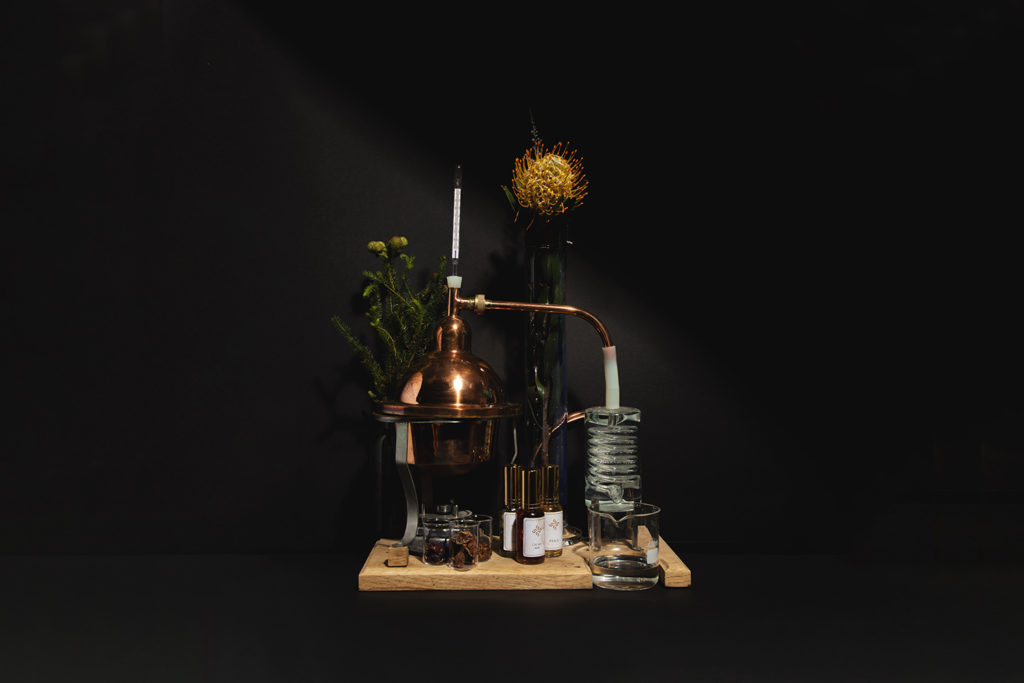

The Cape Floral Kingdom
The Cape Floral Kingdom is one of only six such biomes in the World. It is the smallest, but also the richest and most abundant with more species of plant being found on the slopes of Table Mountain than in all of Great Britain! It is these plants, known as fynbos, that we use to give our gins their unique character and flavour
We propagate, grow and harvest our own and also source fynbos from local farmers and organisations who already provide plant material to the broader industry for medicinal or culinary use. We work with several indigenous plant nurseries, to propagate plants for us which are then re-established in their natural environment and hand harvested. All our plantings are registered with and supervised by Cape Nature.


Agathosma species
Although challenging to grow, Buchu attracts bees and butterflies to the garden, and is a natural insect repellent if rubbed on your skin or bedding. To deal with hangovers simply add a handful of the leaves to boiling water and drink as a tea.
3. Tortoise Bush
Muraltia spinosa
This coastal plants’ twigs and leaves are infused in water and used for general pains. The berry is also sometimes eaten, especially by tortoises who love hanging around these bushes during berry season.



The dried fruit often sold on the side of the road is great for sprawling quickly over undesirable banks and areas of the garden you want to cover. But you might not know that you can eat the fruit raw and that drinking the leaf juice will help with indigestion, toothache, and earache and other common ailments. It also helps subdue insect bites and bluebottle stings..
5. Honeybush
Cyclopia species
Honeybush produces an exciting pea-shaped yellow flower in spring that is a feature for any garden. The plant grows quickly, needs pruning, and looks best when planted in groups at least one metre apart. There are 23 types of Honeybush, but only 9 make good tea.








